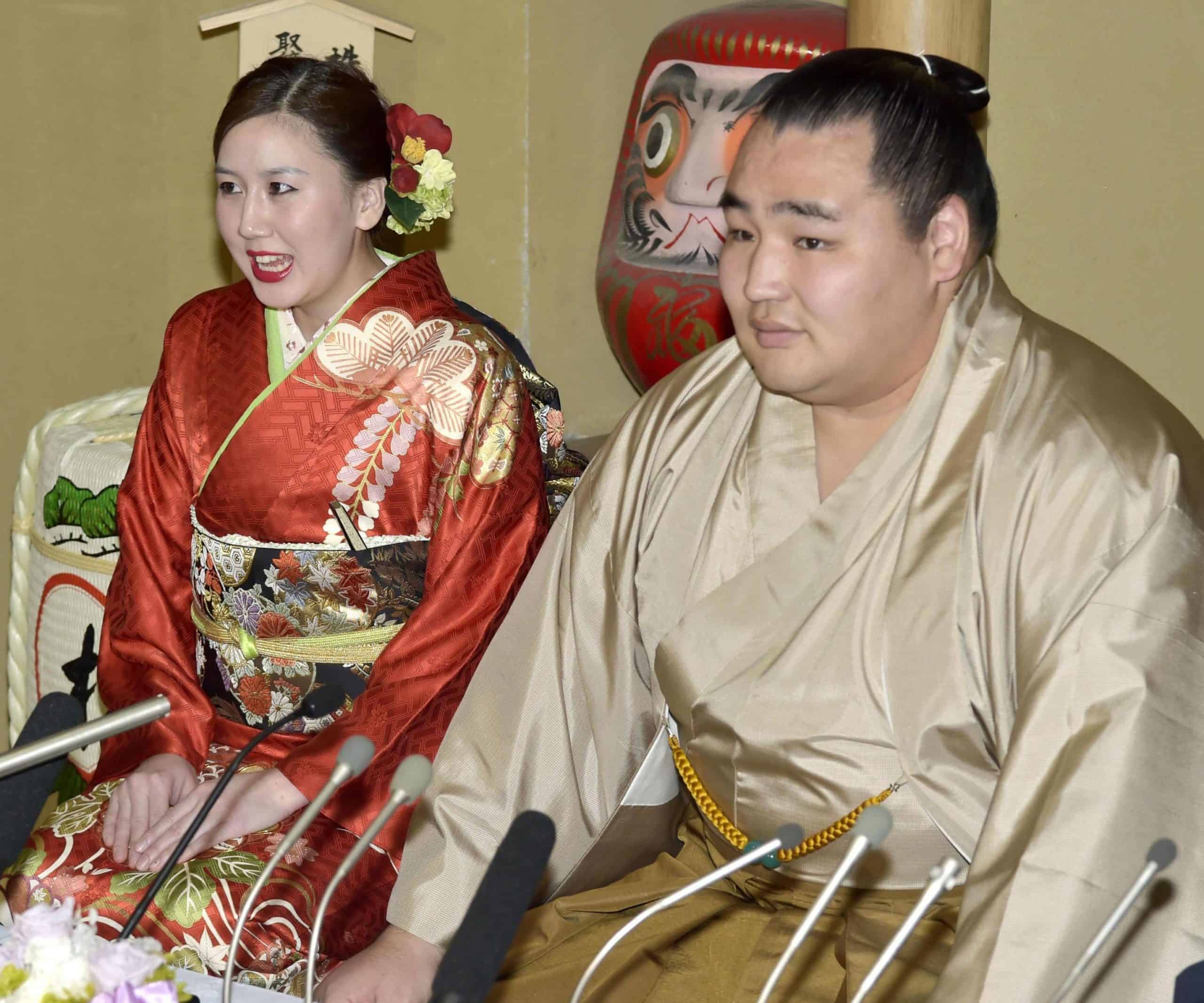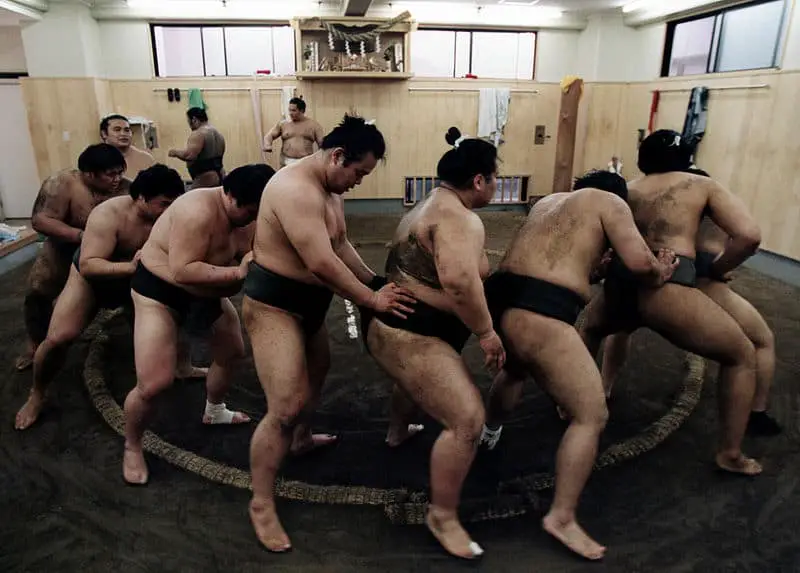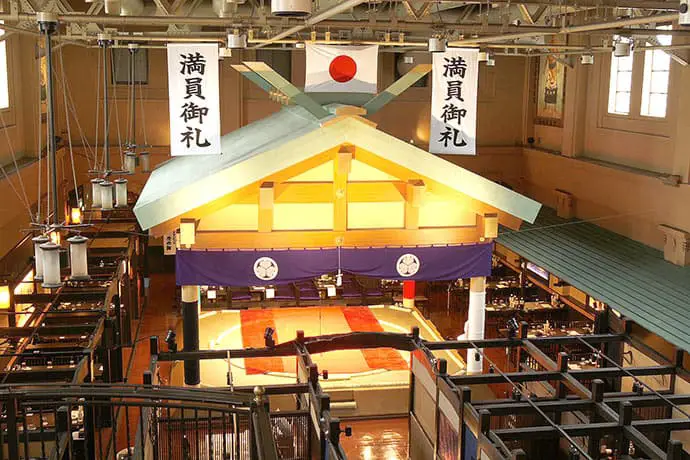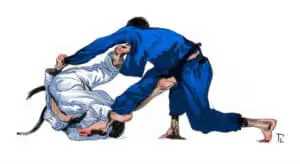Sumo wrestling is a sport steeped in tradition and wrestlers are expected to uphold the old way to ensure the sport maintains its purity. Sumo wrestlers’ lives are heavily controlled by their stable master and the Japan Sumo Association who dictate what they can wear, their daily schedule and even what they eat.
Can sumo wrestlers marry?
Only sumo wrestlers who reach the top 2 divisions have the right to marry. Wrestlers who are in the lower divisions must live in a sumo house (Heya) and spend the majority of their time in the house eating, training and doing chores. Women are not allowed in the Heya.

Sumo wrestling is different to many other sports in that it is an all encompassing pursuit. To begin a sumo career young men join a Heya where they live, eat, train and sleep alongside their fellow sumo athletes.
As they are climbing the ranks of sumo their entire life centers around the sumo and the Heya. They wake up at 5 or 6 in the morning and train for hours. They then cook breakfast for themselves and the senior athletes.
After eating breakfast they then have an afternoon nap. Once their nap is complete they often train again or complete chores for multiple hours. Before or after dinner they might have 2 or 3 hours of relaxation before they must sleep and get ready to repeat the day all over again tomorrow! To find out more about sumo training go here!
Sumo wrestlers who are not in the top 2 divisions must live in a Heya and follow the strict lifestyle described above. These lower ranked sumo wrestlers are not allowed to marry and heavily discouraged from having girlfriends. Their coaches want them to focus 100% on improving their wrestling skills.
Even if lower ranked sumo wrestlers were allowed to marry it would be unlikely the relationship would work because women are not allowed in the Heya and sumo wrestlers have so little free time.
When Can Sumo Wrestlers Marry?
Sumo wrestlers have the right to marry when they reach the top 2 divisions of sumo. These sumo wrestlers are considered professional and are able to live in a private residence outside the Heya and receive a salary from the Japan Sumo Association.

Sumo wrestlers who are competing in the bottom 4 divisions of the sport have very little freedom. Their stable masters have immense control over their lives as they must live in a communal sumo house (Heya). Sumo in the bottom 4 divisions are often teenagers or in their early 20s.
Once a sumo wrestler reaches either the Makuuchi or Jūryō division their life changes drastically. A sumo wrestler makes it to the professional ranks has the right to leave the Heya and live in a private house or apartment and receive a healthy salary.
Professional sumos (also known as Sekitori) also do not have to spend hours everyday cooking and cleaning and have the right to marry and have children. They also receive 2 younger sumo wrestlers as their personal assistants to help them with administration work and their training regime.
Many professional sumos take advantage of their new rights and free time and live separately from their fellow sumos. They also find wives and start families, with sumo being famous for fathering multiple children.
Becoming a professional sumo or Sekitori is no easy task and is a very elite group. Currently, there are almost 800 sumo wrestlers in Japan and only 70 Sekitori. There are 42 sumo wrestlers who compete in the top division of Makuuchi and 28 sumo wrestlers battle it out in the second division, Jūryō.
What Happens If A Sumo Wrestler Drops Below the Second Division?
If a sumo wrestler performs badly they can lose their position in the top 2 divisions. If this happens they can still remain married and live in a private residence but they have to increase their training hours and time spent performing chores at the sumo house.
Sumo wrestlers change divisions based on their win and loss record. If a top ranked sumo wrestler loses too many matches they will be relegated to a lower division.
When a sumo wrestler moves from the second division to the 3rd division they automatically lose their salary from the Japan Sumo Association and the prizes they can win in tournaments also drops. To make money relegated sumo wrestlers need to perform chores around the sumo house such as cooking and cleaning.
A married sumo wrestler’s relegation from the professional ranks down to the amateur divisions can really place a strain on their marriage. Newly relegated sumo wrestlers have to spend much more time training and performing chores at the sumo house and they now only receive a small amount of money from their trainer instead of a healthy salary from the Japan Sumo Association.
Due to the strain on their marriage many relegated sumo wrestlers opt to retire and look for other ways to make money so they can adequately support their families especially if they are in their 30s and suffering from injuries.
When Do Sumo Wrestlers Retire?
Most sumo wrestlers retire by the age 25 if they fail to make it to the professional ranks. While even the most successful sumo wrestlers usually retire by their mid 30s.

Sumo is an incredibly tough life where athletes must train for hours everyday, adhere to a strict diet and schedule and compete in a sport that leaves them with serious injuries. Due to these factors sumo careers are very short and even most of the top Sekitori retire by their early 30s.
As only a small percentage of sumo wrestlers make it to the professional level most wrestlers are stuck in the unpaid lower divisions and retire in the mid 20s. This is because if a wrestler hasn’t made it to Sekitori by the time they are 25 they most likely never will.
Sumo wrestlers in the unpaid divisions are forced to live in a communal house where they must perform hours of chores everyday, have little free time and can not get married. Sumo wrestlers put up with this regime for years in hopes of making it to the top 2 divisions and earning a 6 figure + salary.
When many sumo wrestlers realize their dream of making it to the professional ranks is over they retire. Most sumo wrestlers will know if they will make it to Sekitori by the time they are in their early and mid 20s.
What Do Sumo Wrestlers Do After Retirement?
When sumo wrestlers retire they can become an elder known as a Toshiyori and run their own wrestling gym and receive a pension from the Japan Sumo Association. Many sumo wrestlers open restaurants, sign endorsement deals or pursue regular 9 to 5 jobs.

Many successful sumo wrestlers choose to become Toshiyoris which gives them the right to open a sumo wrestling academy and receive monthly payments from the Japan Sumo Association. Typically, only Sekitori are able to open academies approved by the Japan Sumo Association.
Lower ranked sumo wrestlers who never made it to the top of the sport often go back to college and pursue a range of different careers with many entering the corporate world and becoming bankers, accountants, salesmen and lawyers.
A popular career choice for retired sumo wrestlers is to open a restaurant and serve the famous sumo stew (Chanko Nabe). When sumo wrestlers live in a Heya (communal wrestling house) they spend hours everyday cooking for their fellow athletes and are renowned for being amazing chefs. There are numerous sumo run restaurants in Tokyo where you can eat like your favorite Rikishi.
